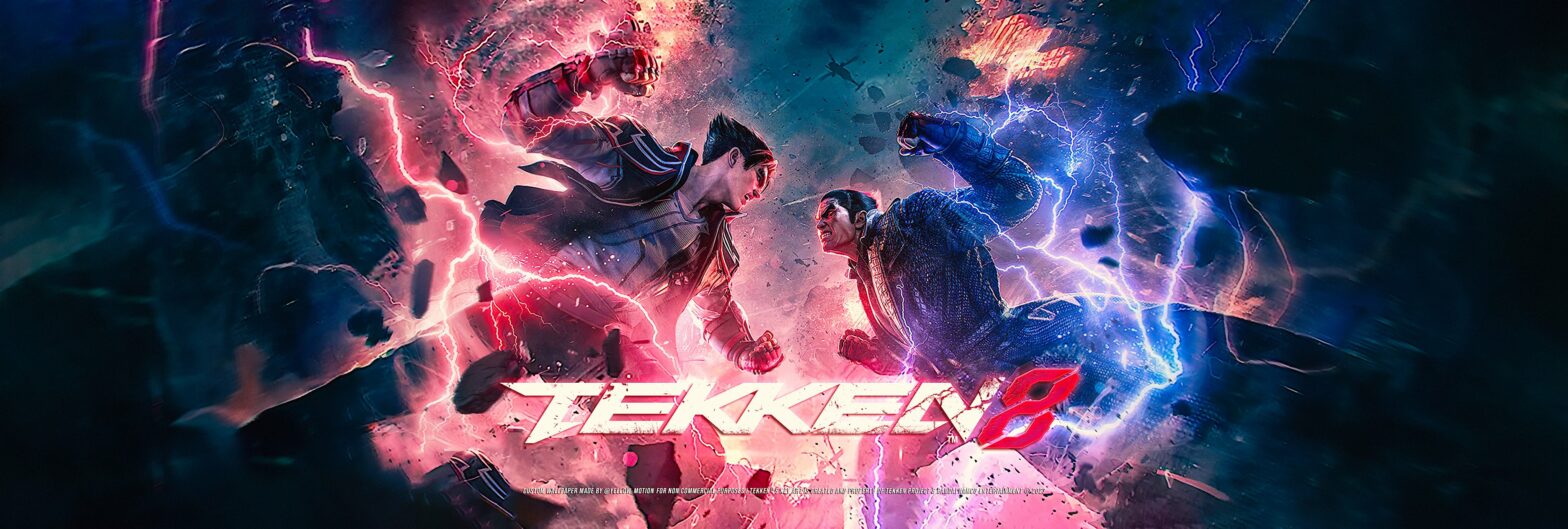You'll love it if:
- You enjoy fast paced combat and complex mechanics
- You strive to learn mechanically difficult characters and unique move sets
Not for you if:
- You want to just mash buttons (at least until Eddy enters the game)
- You want a simple straightforward fighting game
Every so often industry releases line up so well that they create a constant stream of groundbreaking releases one after another. First was Street Fighter 6, followed shortly after by Mortal Kombat 1, and now a few months later, we have Tekken 8. Three titans of the fighting game genre. The story continues where Tekken 7 left off, bringing in a large 32-fighter cast with 3 new faces, and many more fighters on the way.
Tekken as a series always has a special place in my heart being the first ever fighting game franchise I’ve ever played. From the Play Station 1 at my cousin’s house to playing on a giant projector in a massive arcade I always find myself coming back to the game.
Tekken 8 faces the challenge of decades of refinement and design choices honing the franchise quality to an edge, and then finding a way to make this installment even better. Tekken 8 builds on their successes taking what we love about the franchise, and dials it up to 11. With an enjoyable cinematic story mode, an online fighting hub that I’ve come to love, and some of the best guides and practice features for new players, Tekken 8 is already one of my new favourite fighting games to come out in recent times.

TL;DR
Tekken 8 is an amazing game that builds on its strengths and adds to what already made the franchise a success. Combat flows smoother than ever and the aggressive turn in gameplay is spotlighted by the new Heat system. All this comes with some of the best onboarding for newer players and the most in-depth training options and features in any fighting game to date. The game is clean and refined and continues the Tekken legacy perfectly.
Bringing the Heat
Every new fighting game iteration always brings the question, “What’s new?” in this version. And honestly, Tekken 8 has somehow reached the perfect balance of adding just enough new features to make the combat more evolved and unique, while keeping the majority of it true to the previous installments. While each character has received tweaks to frame data, power, and even some new moves in Tekken 8, the main changes are the additions of the “Heat” system and “Grey Health”.
Tekken 8’s Heat system adds more aggression and personal character to the already iconic cast. Very common in Tekken games is seeing characters darting back and forth looking for openings, attempting to play footsy or whiff punish, and changing up approaches to catch their opponents off guard. All of these are still very present, but games now have the added aggression the Heat system provides. And this system has made Tekken 8 feel more fast-paced with more slug-fests than previous installments of the franchise.

Each player begins the round with a full Heat bar that replenishes at the start of the next round. I love that games are moving away from resource management that builds up over time and is giving us a full toolkit from the get-go. Players can enter Heat in a variety of ways, either through various signature moves to dash toward the enemy and keep up aggression, or through a single button press to attempt a block or whiff punish.
While in “Heat Mode” your Fighter’s offensive capabilities are increased across the board. You do increased chip damage on blocking enemies. Your grey health regenerates faster, and you can expend the entirety of the Heat bar to do a flashy finishing attack, like those of rage arts. Additionally, each character gains access to unique and more powerful attacks while in Heat Mode. Marshall Law for example has more powerful attacks with his nunchaku, and Lars has faster recovery frames and can chain powerful stance-changing attacks with each other.

Keep Up the Pressure
The story starts full throttle with Jin and Kazuya fighting as usual, and rampantly destroying a city as they go. After the duel Jin “loses” his devil powers and it sets up again the story of him journeying for the power to stop Kazuya from destroying the world. Meanwhile, Kazuya has begun his plan of creating his new world where only the powerful thrive. And to that end, Kazuya has created, again, The King of Iron Fist Tournament.

The story mode is around 4 hours of a mix of cut scenes and story battles with interesting twists. Overall, I enjoyed the story mode and long-time Tekken fans definitely will. There are many nods to previous games and inside jokes for fans, and the story takes a very interesting turn at the end. I won’t spoil it here.
The characters mostly have their moments to shine and the story does what it was meant to do, develop the lore, and give a reason for this diverse cast to get into an arena and punch each other. Another fun returning feature is the character-specific side stories and endings to flush out the cast. My favourite among them is always the funnier ones rather than the serious ones. I really enjoyed Tekken going from taking itself very seriously regarding the main cast and then having just a lot of fun and goofiness with the supporting cast.
I do wish the Character Stories mode was a bit more thought out. While the opening and ending cutscenes are cool, this is a glorified arcade mode. I would personally appreciate more cutscenes or stories for the supporting cast, but as is, I’m still happy to have at last some story for them.

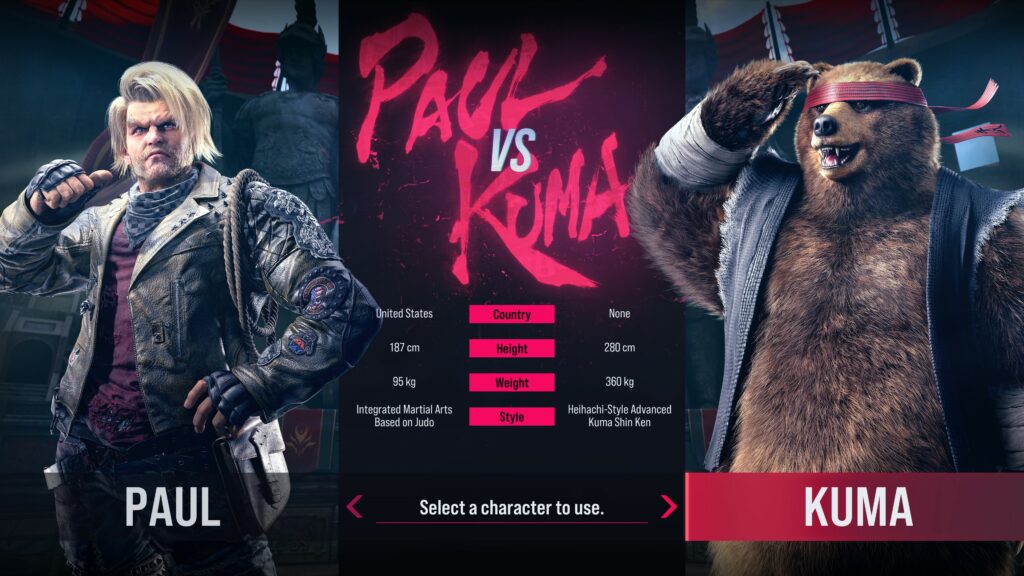
The Quest to be the Best
I have to say, the Arcade Quest mode might be one of my favourite “Campaign” modes in fighting games of recent times. It provides the perfect onboarding experience for newer players while being a fun refresher course for long-time players. It also achieves the feeling of a campaign while not locking you into having to play as Jin.

Arcade Quest has you play essentially as yourself, starting as a new fighting game player and exploring both the newest release of Tekken as well as the in-game local arcade scene. While cheesy a times, I loved being able to pick up and play whatever character I wanted for the campaign and go on this little journey to become the champion. This mode is a fun bonus and serves as a great extensive tutorial for those who are still new to fighting games.
I feel that the best feature about Arcade Quest is that it slowly brings in new mechanics and techniques at a good pace, giving you time to practice what you do know before throwing new trials and tutorials.

Mastering Tekken 8
Outside of the arcade quest game mode, Tekken 8 has some of the most intensive resources I’ve seen in any fighting game. This is almost a necessity with 32 characters on launch having hundreds of unique moves and attack sequences to learn. Tekken as a series is intrinsically complicated, much more so than almost any other fighting game series. For the fighting game genre specifically, onboarding new players with little to no experience in these games is one of the hardest challenges there are.

We have seen Street Fighter 6 and its simplified control scheme. But with hundreds of moves per character in Tekken 8, it is impossible to map them all out compared to the relatively smaller move sets in SF6. We have seen auto combos in games like Mortal Kombat 1 and Gran Blue Versus, where pushing the same button repeatedly can lead to pre-mapped sequences, but that also leaves little room for variety. Tekken 8 tries to meet a middle ground of giving new players a feel for what characters can do, but understandably, has a harder time making simplified controls for newer players.
Tekken 8 brings us “special style” a unique and even toggleable control scheme where special moves and attack chains are mapped to specific buttons. Simple combos, special moves, and your Heat Burst and Rage Art are just a button push away. When in special style, a small display appears, even when online, so your opponent knows when you are using it.

Unlike in SF6 where the lack of directional inputs made some moves like Zangief’s Screw Pile Driver nearly too powerful, the special mode in Tekken 8 is almost a handicap. With such a large move set, it is impossible to map them all to just a few button inputs. Where versatility is key, this special mode is just for new players getting the feel for a character and show what they can do. This feature also made the story mode a lot more enjoyable and kept the immersion. Simply by the fact I didn’t have to spend five minutes in the move menu learning a character every time I had to play as someone new.
Enter the Lab
Perhaps one of the best tools in making Tekken 8 more approachable for new players is the details and features included in the training mode. Several features make drilling and training-specific scenarios and combos so much easier and can help with situational knowledge.
The addition of save states to revert to specific positions can help master skills such as wall carries and punishes, or even practising combos after wall breaks or ground breaks. Setting up the AI to do specific attack patterns to work on punishes is another great feature, so you can practice landing your combos on non-stationary opponents.
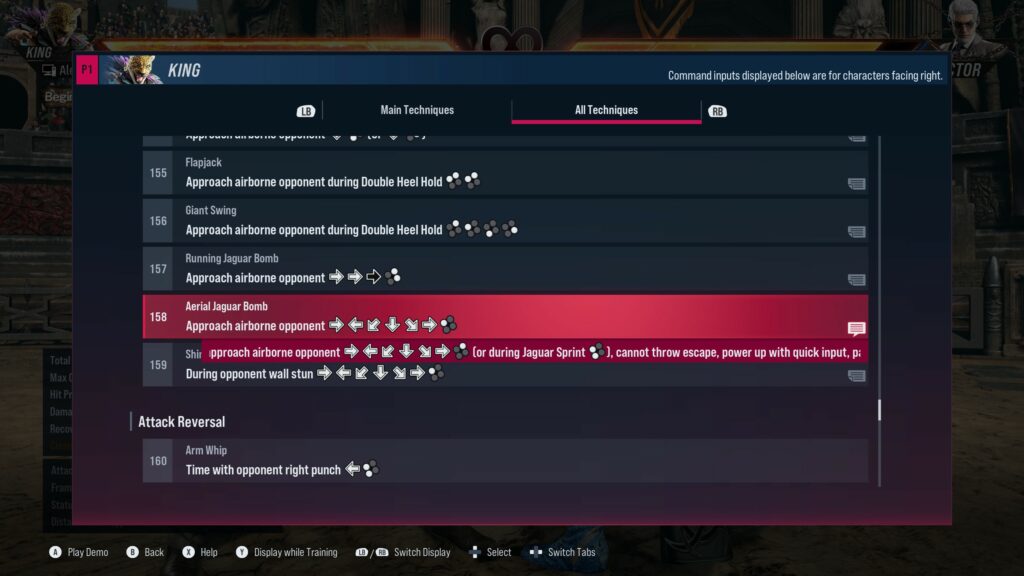

Even landing these combos becomes easier to master in Tekken 8. Timing is key in Tekken, especially when executing long strings of attacks. Often frame-specific inputs are needed to execute longer carries and attack combos and can be very hard to master. Footnotes of moves combined with frame data in the training mode help explain where and when you need to move and time your inputs, and this information made learning chains a lot easier. The one issue with all this information and frame data is that it is not well explained by the game itself.
These features and more technical details are not taught very well in the game and I feel that players new to the series will see all these numbers and either panic or choose to simply ignore them. This is a fighting game after all and most players would rather mash buttons and throw punches than do math.
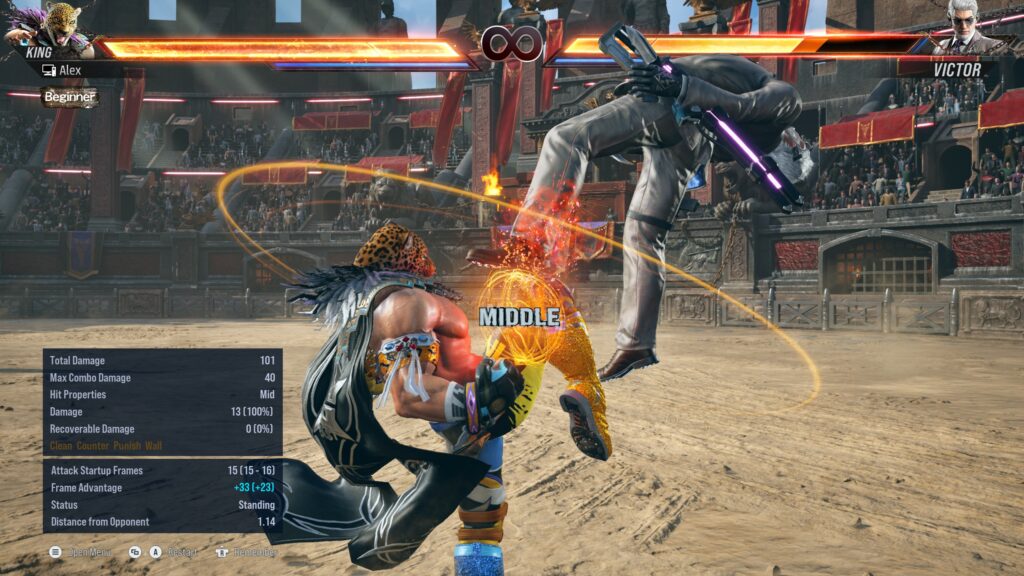
Ghosts of the Past
Probably the most impressive feature of Tekken 8 is the Ghost mode, allowing you to fight against “ghosts” of yourself and other players. Tekken 8 passively watches your games and learns your fighting style. Specific moves you like to use more than others, your normal follow-ups, your poke patterns, and you go to punishes.
It takes all this information and makes a “copy” of yourself. You can at any time fight this copy of yourself to see what your strengths, are and more importantly, what your weaknesses are. Fighting yourself to become an even better version of yourself is such a cool feature and I’m honestly super impressed by this implementation. What’s more, players you see in the online hub area as well as players on your friends’ lists can have their “ghosts” on their profile. The next time one of your friends is giving you a rough time, you can take their ghost into a practice session to bring the pain next time you meet up for some games.


What brings this feature to the next level is the ability to watch recorded games you’ve played, and take control mid-recording. Yes, you can hop back into previous matches, at specific points, and take control from that point on. From either character’s perspective even if both were played by a human. This feature is insane. Being able to go to where you over-extended, whiffed an attack, or failed to punish your opponent, and being able to correct what you did and practice for next time, is phenomenal. This level of effort put into this feature must have been immense.

You vs The World
I love online battle hubs. I know a lot of people think they’re cheesy or unneeded, but I feel they just add so much to the online experience. Being able to move around online and challenge other people you see. Sitting down at virtual arcade cabinets to throw down with random opponents. It just feels so much more alive than sitting in a loading screen on a menu practicing in training mode while waiting for a match finder to pair you against someone. And in this regard, Tekken 8 did not disappoint.
Tekken 8 brings us the Arcade Lounge. A large multi-area hub that lets you access all of the character customization, practice, and gameplay features in a virtual arena. Here you can queue up in games, buy cosmetics for your fighters and your avatar, and even play in the best alternative game mode of all time, Tekken Ball, now with multiplayer.
Not only can you queue up at machines to play in Tekken 8, but you can spectate ongoing games, save their replays, and even challenge the ghosts of players you find online. The inclusion of player profiles and rival settings makes befriending others online easier and more fun. The best part is that this hub as well is entirely optional for players who don’t like this sort of thing. All these options are easily accessible from menus on the home screen.





Conclusion: Total Knockout
Tekken 8 stuck to what worked and what we loved about the series, building on its strengths and adding to what already made it such a success. Combat flows smoother than ever, the aggressive shift in style creates fast-paced high-action games, and the Heat system allows for player skill and character stylization to shine. All this comes with some of the best bet onboarding for newer players and the most in-depth training options and features in a fighting game to date.
The only downside is the lack of development in character backstories and lore outside of that of the Mishima family in the main story. I would have loved to have more fleshed-out character stories and a longer campaign. All in all, Tekken 8 shows why Tekken is a mainstay of the fighting game genre and is a perfect addition to any fighting game collection.
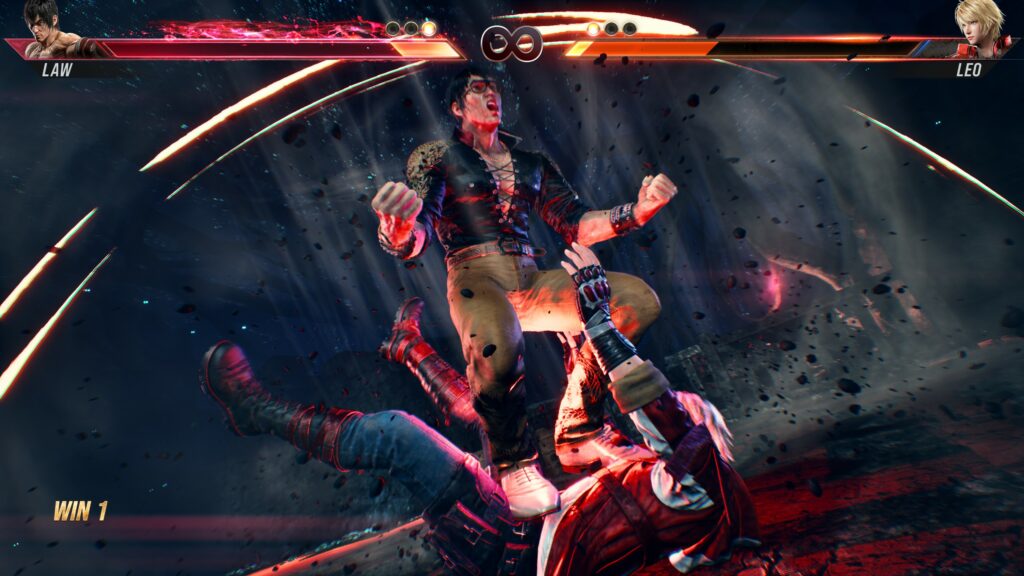
Special thanks to Bandai Namco for providing us with the review copy!
